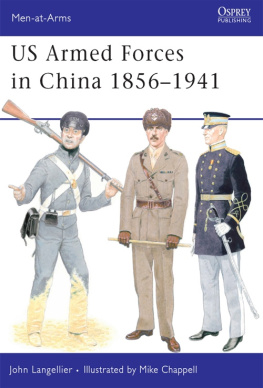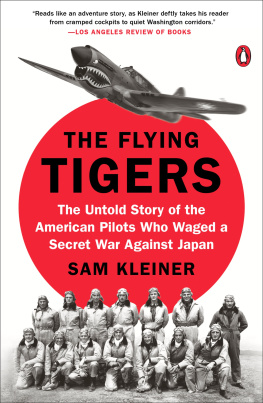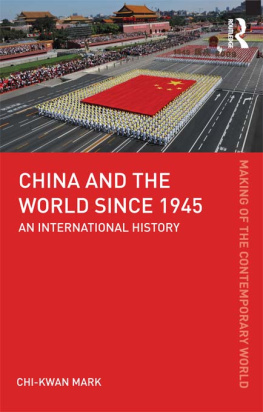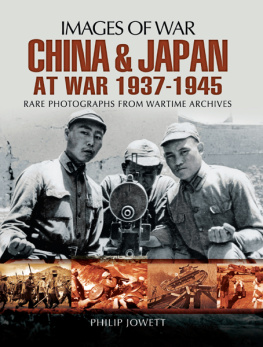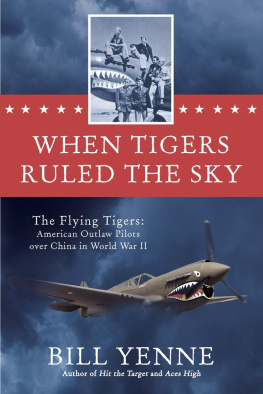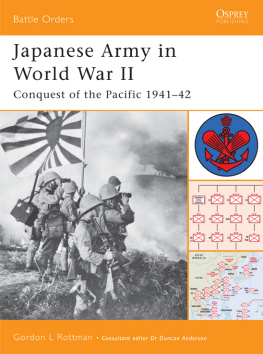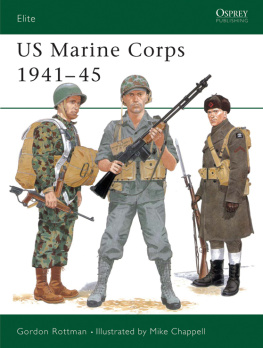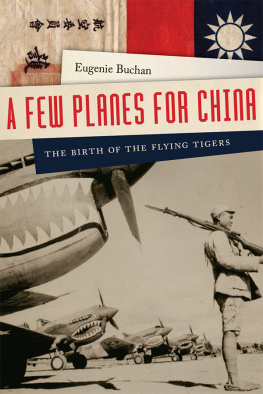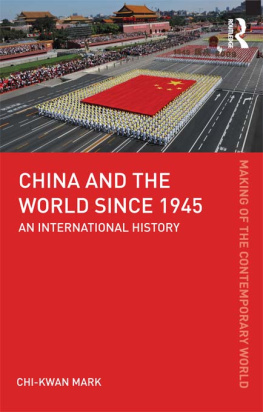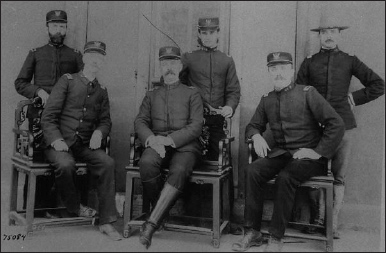Men-at-Arms 455
US Armed Forces in China 18561941
John Langellier Illustrated by Mike Chappell
Series editor Martin Windrow
CONTENTS
US ARMED FORCES IN CHINA 1856-1941
INTRODUCTION
I N THE 18th century the Celestial Empire held vast treasures that were the envy of other nations. Tea, silk, and fine chinaware were among the luxury goods sought by Western traders to feed the insatiable markets of Europe and America; but China required almost nothing from these strangers, since the Dragon Throne ruled over a virtually self-contained domain and had little interest in mechanical toys. Precious metals, however, were acceptable: if the foreign barbarians paid in gold or silver they would be supplied with the exotic raw materials and products of the empire, though only while being kept at arms length in terms of political and cultural relations.
As time passed the trade deficits in Chinas favor became enormous, and the drain on the coffers of other countries, particularly Great Britain, created such problems that Queen Victorias government took measures to halt this one-way flow of specie. Impatient with the failure of diplomatic and economic avenues, Britain applied military leverage to open up China to foreign imports; other powers, including Japan, were not far behind, and eventually the United States followed suit. The foreigners pressed for the physical concession of coastal and river-port enclaves for traders, where they could operate in privileged independence of Chinese law and custom. As each decade passed during the 19th century more foreign naval forces appeared, much to the chagrin of Chinas rulers and population, while the protection of Christian missionaries provided a repeated excuse for landings and deeper penetrations.
One of the few products that found a ready market in China was the opium grown in Britains colonies, and in 1839 open warfare broke out as the British tried to force China to accept this addictive and debilitating import. Nearly a decade after this First Opium War the British and French were in the forefront of another major test of arms between China and the Europeans. This Second Opium War or Arrow War erupted at a time when major internal upheavals threatened the ruling Ching (or Manchu) dynasty in Peking, thereby further eroding Chinas ability to protect herself. The Celestial Empire was militarily antiquated, and from the mid-century onwards modern firearms were another commodity traded into China on a massive scale, including artillery for her coastal defenses. Not to be left out of the competition for Chinese markets, the United States, during its days of manifest destiny, also became a player in the game.
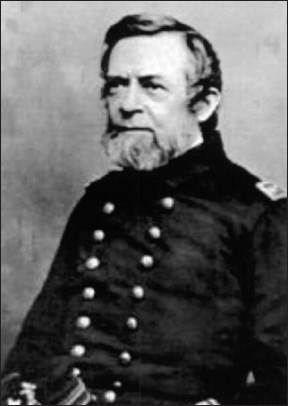
US Navy Commander Andrew H. Foote, captain of the sloop USS Portsmouth, led a landing force of sailors and Marines in the capture of the Barrier Forts at the mouth of the Canton river in November 1856. The photograph was taken in later years, after Capt Foote had distinguished himself during the American Civil War. (LC)
CHRONOLOGY
June 18, 1844 US Marines from USS St Louis come ashore in Canton to protect American citizens during a period of rioting, remaining through July 20.
October 23, 1856 Nineteen Marines and 64 sailors arrive from USS Portsmouth to protect Americans in Canton. Reinforcements arrive from USS Levant and the frigate San Jacinto on October 27 and November 12 respectively.
November 20, 1856 A combined Navy and Marine landing party attacks the Barrier Forts on the Pearl river below Canton.
July 31, 1859 US Marines and sailors land from USS Mississippi to provide security for Americans in Shanghai during fighting between British and Chinese forces in the area.
June 2225, 1866 After the American consul is assaulted, Marines and sailors from USS Wachusett land in a raid to capture the perpetrators.
July 14, 1866 The crew of USS Wachusett help fight a fire in Shanghai.
June 13, 1867 After a shipwrecked American merchant crew is murdered by locals in southern Formosa, Cdre Roger C. Belnap leads 180 Marines and sailors from the steam sloops USS Wyoming and Hartford ashore, burning a village and killing townspeople.
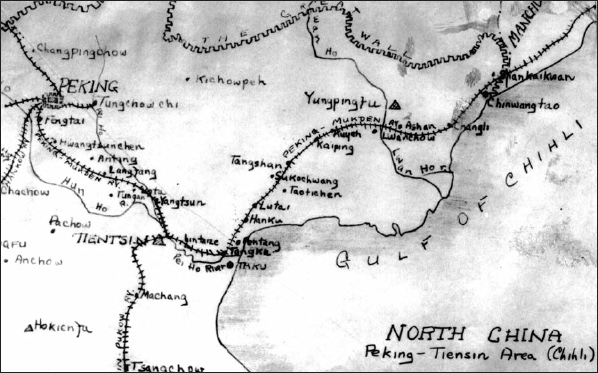
A contemporary sketchmap of the area of northern China where US Army and Marine garrisons served for almost four decades following the Boxer Rising. Their essential mission was to ensure security along the railroad corridor between Taku at the mouth of the Pei Ho river, Tientsin, and Peking. Detachments rotated at various times though Tangshan (center) on the PekingMukden railroad north of Taku, and Chinwangtao (top right) on the coast just inside the Chinese-Manchurian border, at the end of the Great Wall. During the 1900 Relief Expedition the railroad from Tientsin to Peking had been torn up by the rebels, and the columns marched up roads close to the Pei Ho river as far as Tungchow due east of the capital, before turning west. General Chaffees US contingent first saw major combat on August 6 at Yang Tsun due north of Tientsin, where the rail embankment and the river road come together. (USAHI)
March 25, 1894 Marines from the sidewheel gunboat USS Monocacy provide an honor guard for the Chinese viceroys official visit to the US consulate in Tientsin.
November 4, 1898 Marines from USS Baltimore, Boston, and the cruiser Raleigh (C-8) arrive at Taku, then make their way inland to provide the first guard force for the American legation in Peking.
1900: Officers of the Ninth US Infantry and other units (note the Engineer, center rear) enjoy a short respite as they sail to China; that regiment would suffer badly from sickness after they landed at Taku. Most wear the M1895 forage cap and the mohair-trimmed undress jacket with dark blue trousers; the officer at front left wears an M1883/90 sack coat, and the handsome figure at right rear a campaign hat, and sky-blue trousers confined by web leggings. (NARA)
The Boxer Rising:
May 29, 1900 US Navy Capt Bowman McCalla and US Marine Capt John Myers set out from Taku at mouth of Pei Ho river to march to Peking via Tientsin, with Marines and sailors from USS Oregon and the cruiser Newark (C-1); the first contingents of other foreign marines and sailors arrive in Peking two days later.
July 10, 1900 Headquarters and one battalion of the US First Marine Regiment, plus an artillery company, land at Taku to be brigaded with two battalions from the Armys Ninth US Infantry.
July 29, 1900 US Army transport Grant drops anchor in Taku Bay with Gen Adna Chaffee aboard to take command of US land forces.
August 15, 1900 Foreign Powers Expeditionary Force arrives to lift the Peking siege.
October 10, 1900 US First Marine Regiment departs China.
September 12, 1905 Duty of US legation guard in Peking transferred from US Army to US Marine Corps; 100 Marines from the Philippines are detailed.

